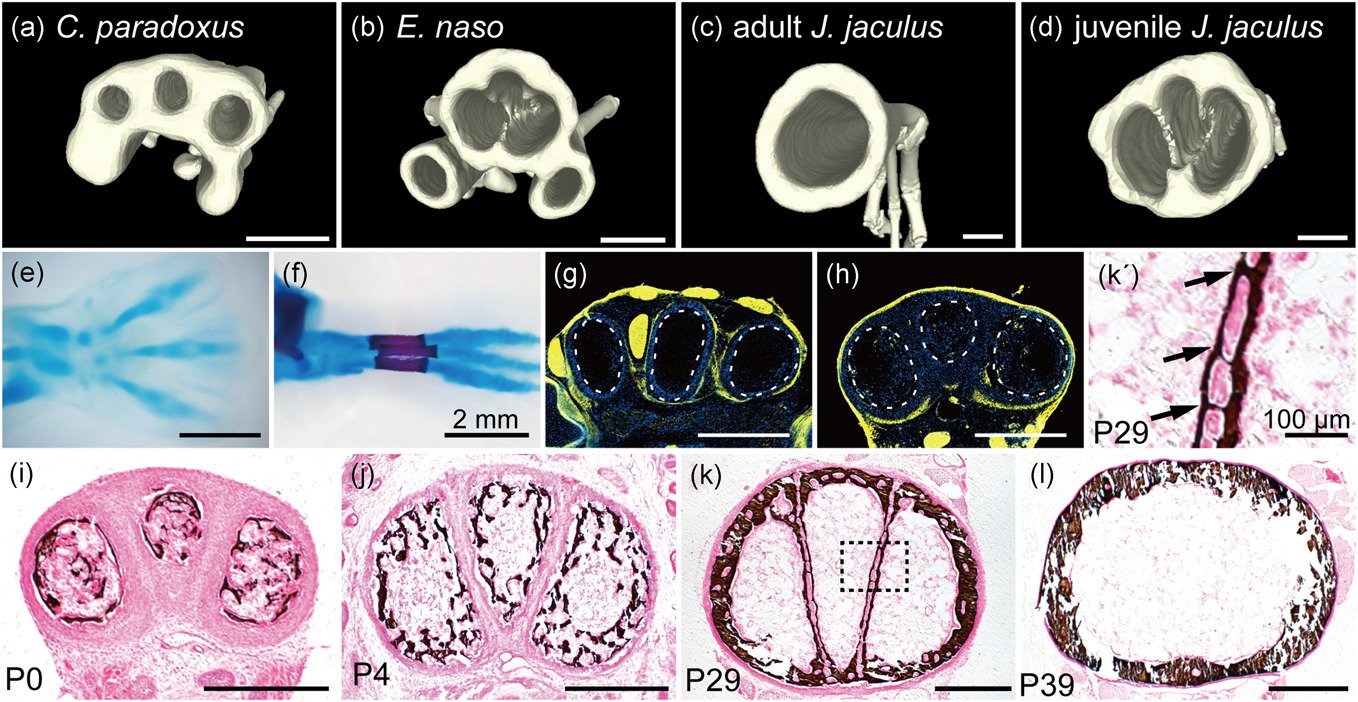Convergent metatarsal fusion in jerboas and chickens is mediated by similarities and differences in the patterns of osteoblast and osteoclast activities
In many vertebrate animals that run or leap, the metatarsals and/or metacarpals of the distal limb are fused into a single larger element, likely to resist fracture due to high ground‐reaction forces during locomotion. Although metapodial fusion evolved independently in modern birds, ungulates, and jerboas, the developmental basis has only been explored in chickens, which diverged from the mammalian lineage approximately 300 million years ago. Here, we use a bipedal rodent, the lesser Egyptian jerboa (Jaculus jaculus), to understand the cellular processes of metatarsal fusion in a mammal, and we revisit the developing chicken to assess similarities and differences in the localization of osteoblast and osteoclast activities. In both species, adjacent metatarsals align along flat surfaces, osteoblasts cross the periosteal membrane to unite the three elements in a single circumference, and osteoclasts resorb bone at the interfaces leaving a single marrow cavity. However, the pattern of osteoclast activity differs in each species; osteoclasts are highly localized to resorb bone at the interfaces of neighboring jerboa metatarsals and are distributed throughout the endosteum of chicken metatarsals. Each species, therefore, provides an opportunity to understand mechanisms that pattern osteoblast and osteoclast activities to alter bone shape during development and evolution.
@article{Gutierrez2019,
author = {Gutierrez, Haydee L. and Tsutsumi, Rio and Moore, Talia Y. and Cooper, Kimberly L.},
title = {{Convergent metatarsal fusion in jerboas and chickens is mediated by similarities and differences in the patterns of osteoblast and osteoclast activities}},
volume = {21},
number = {6},
pages = {320--329},
doi = {https://doi.org/10.1111/ede.12320},
year = {2019},
journal = {Evolution and Development}
}
